AM4 really is AMD's gift that keeps on giving, with four more CPUs launched for the seven year old platform
Surely there can't be any more chips left now?
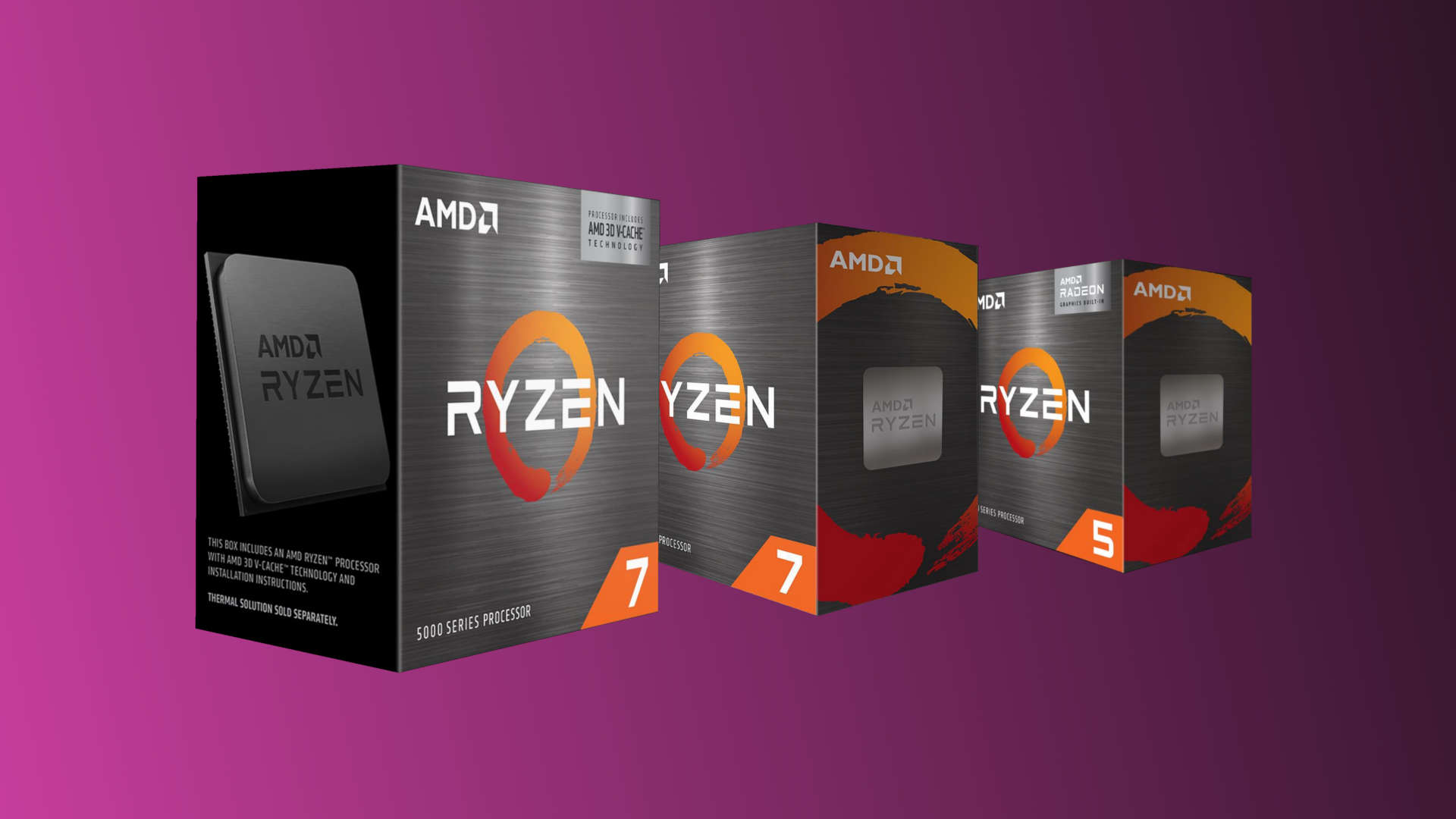
AMD's last generation of desktop CPU socket, AM4, first appeared in September 2016 and most of us assumed that once the current AM5 hit the market, there would be no further CPUs released for the old socket. That's definitely not the case and in this year's CES event, AMD has announced four more AM4 processors: the Ryzen 7 5700X3D, Ryzen 7 5700, Ryzen 5 5600GT and 5500GT.
Starting with the most notable one, the Ryzen 7 5700X3D is essentially the same as the much-heralded Ryzen 7 5800X3D. The only difference is a bit of a drop in how fast it runs, with the base clock going from 3.4 to 3.0GHz, and the boost clock coming down by 100MHz to 4.9GHz.
Other than that, nothing else has changed. You're still getting eight cores, 16 threads, 96MB of L3 cache, and a TDP of 105W. When it appeared in April 2022, we were stunned by just how great it was as a gaming-focused CPU. At the time, however, it was pretty expensive and cost more than the 12 core, 24 thread Ryzen 9 5900X. Since then, it's dropped in price and AMD has sensibly pitched the SEP (aka MSRP) for the 5700X3D at $249.
At the moment, the 5800X3D is typically around $349, so the $100 difference is definitely worth your attention. We don't really need to test the 5700X3D, because you can work out the best/worst case scenarios for it, purely from the clock speed differences. Depending on the game and workload, the Ryzen 7 5700X3D will be between 2% and 12% slower than the 5800X3D and that's more than acceptable.
If you currently have an AM4-based gaming PC and you're looking to extend its lifespan, then spending $249 on a Ryzen 7 5700X3D has to be the most cost-effective way of doing it. Let's hope there's going to be plenty of stock around, as I expect these chips will be snapped up very quickly.
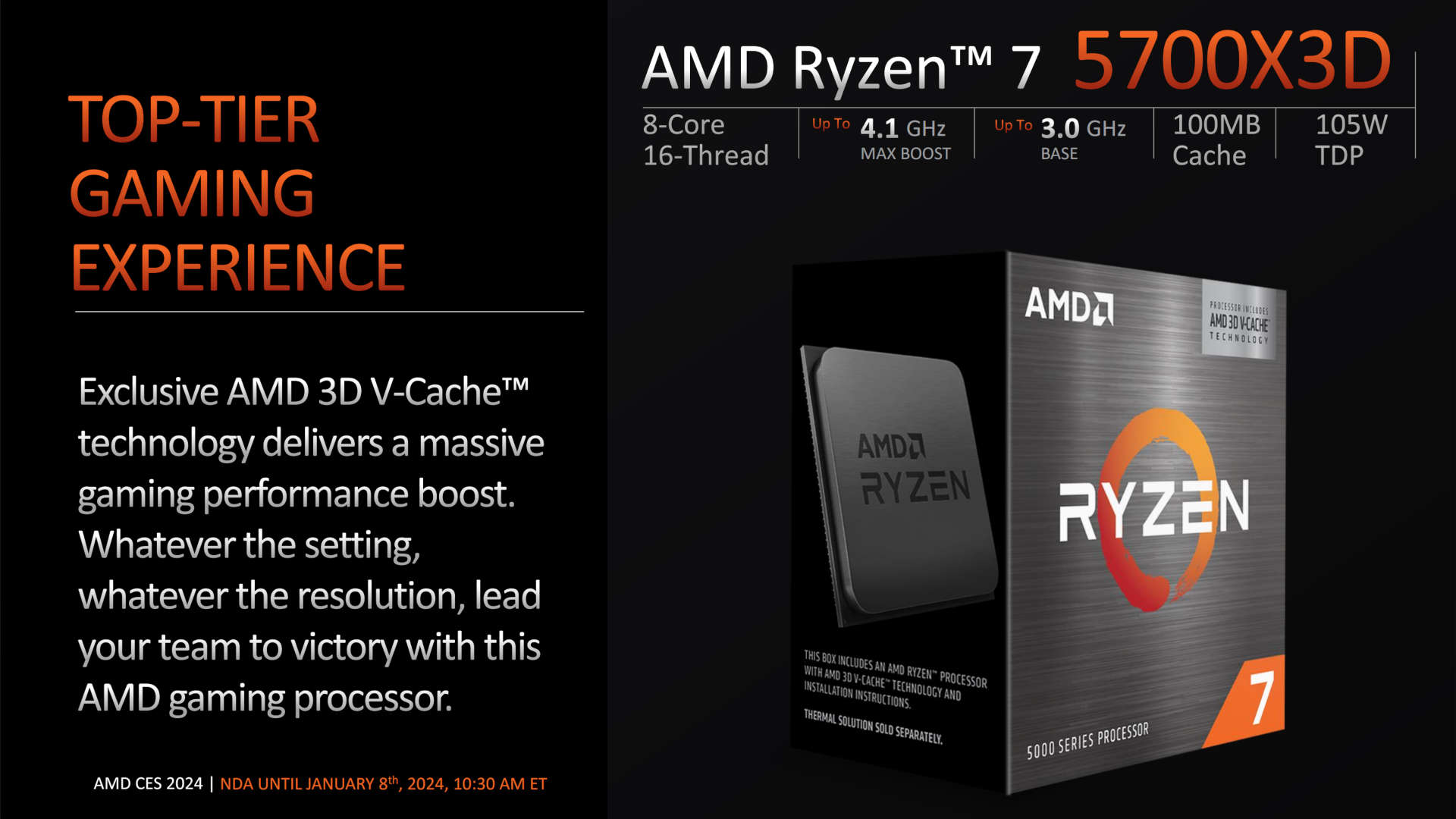
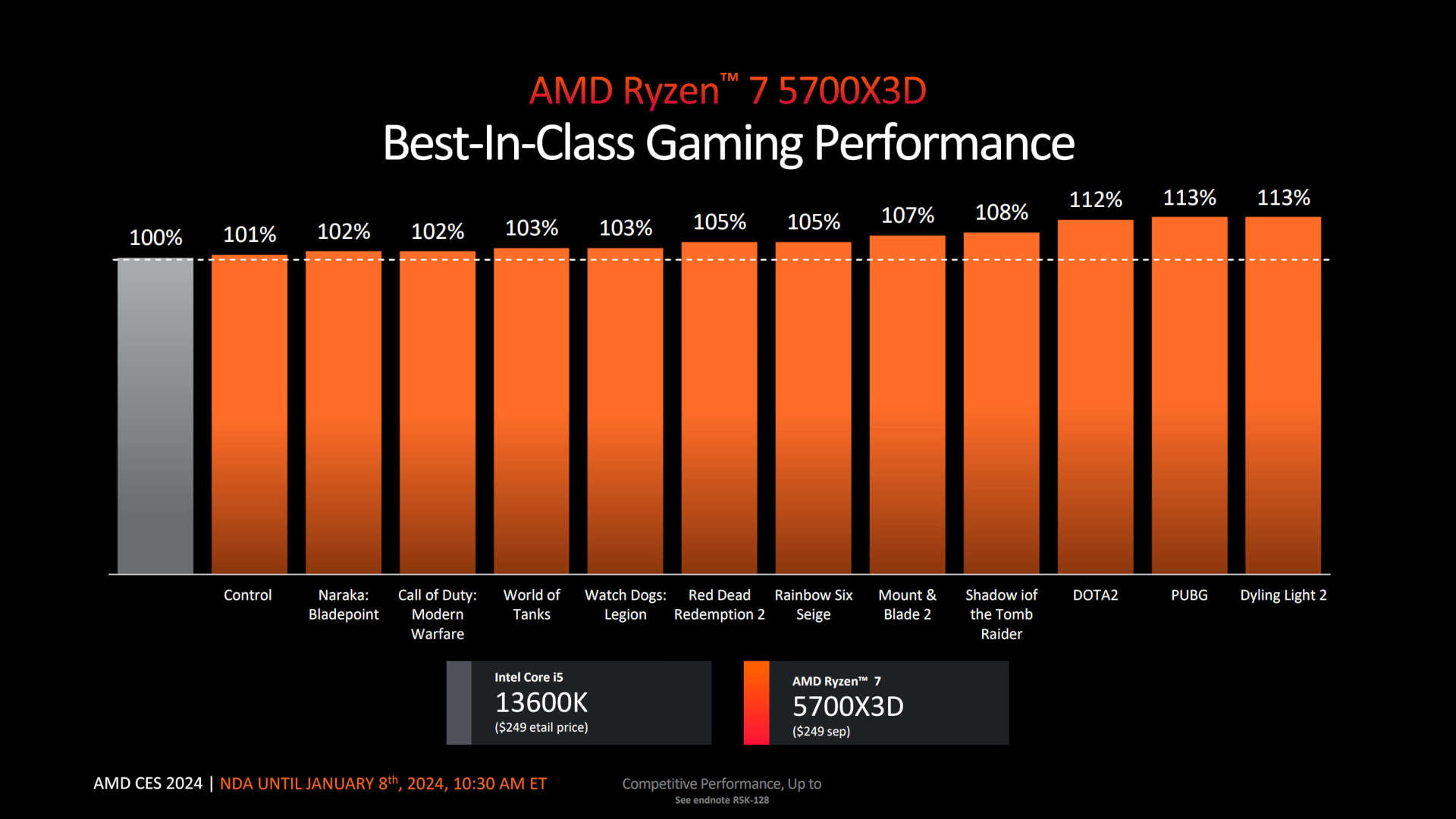
Bucking this theme of same-but-slightly-slower, the new Ryzen 7 5700 might appear to just be a Ryzen 7 5700X (read our review) with different clocks, but it's actually quite a different chip. The old 5700X has eight cores, 16 threads, 32MB of L3 cache, and base/boost clocks of 3.4/4.6GHz respectively. It also has full support for PCIe 4.0, allowing you to fit some really fast SSDs into your gaming PC.
The 5700 also has eight cores and 16 threads, and its base/boost clocks are 3.7/4.6GHz, so overall, it's technically clocked faster than the 5700X. However, there's only 16MB of L3 cache and PCIe support is limited to the old 3.0 version. The reason for this is that the Ryzen 7 5700 is actually a Ryzen 7 5700G APU, with the integrated GPU disabled. That's a processor that we've rated very highly in the past, so it's not necessarily a bad thing.
The biggest gaming news, reviews and hardware deals
Keep up to date with the most important stories and the best deals, as picked by the PC Gamer team.
However, AMD has set the SEP for the 5700 to $175, which is around $34 less than what you'd pay for a 5700X, at current prices. For me, having more L3 cache and better PCIe support is worth more than $34 and I suspect that AMD isn't going to sell all that many 5700s. These are clearly 5700G chips with broken GPUs that AMD is looking to shift from its inventory. Thanks, but no thanks.
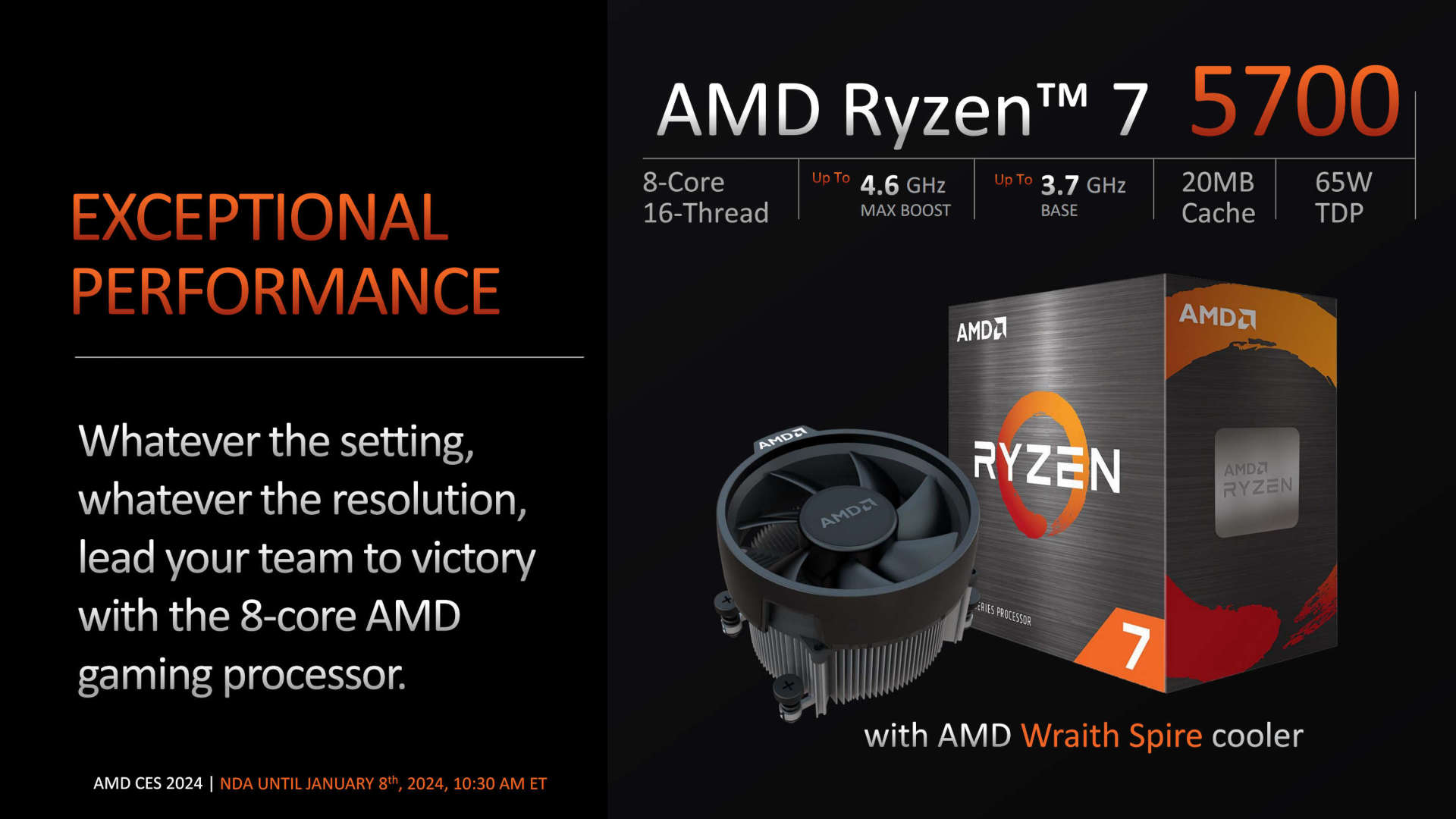
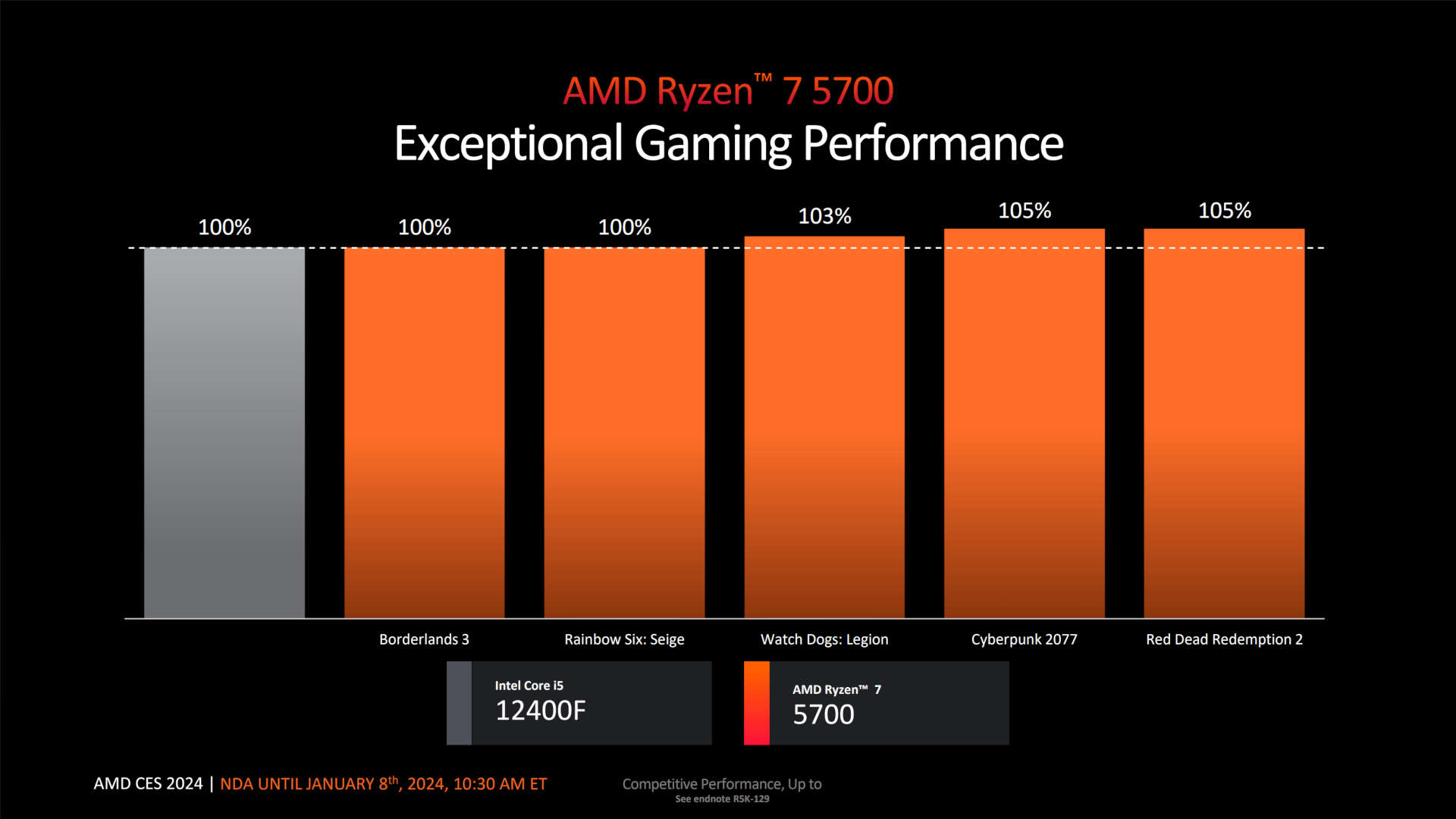
Rounding off the new AM4 models are two more APUs, the Ryzen 5 5600GT and 5500GT. Think of them as being cut-down 5700G chips and you'll be spot on. The first has six cores, 12 threads, 16MB of L3 cache, PCIe 3.0 support, and a Radeon Vega 7 integrated GPU (i.e. 448 shaders). Base and boost clocks are 3.6 and 4.6GHz.
The 5500GT only has four cores and eight threads, but the rest is the same as the 5600GT, though the boost clock is 200MHz lower at 4.4GHz. Are they worth buying? Well, the SEPs are $140 and $125, respectively, and as the Ryzen 7 5700G is currently selling for around the $200 mark, they're significantly cheaper than the chip they're based on.
The 5500GT will be fine for a basic office PC that's going to do nothing more than web browsing, light applications, and media consumption. On the other hand, the two extra CPU cores in the 5600GT make it better suited for lightweight, entry-level gaming but if that's what you're really looking for, then you're better off getting the 5700G, as it has 14% more shaders in the GPU.
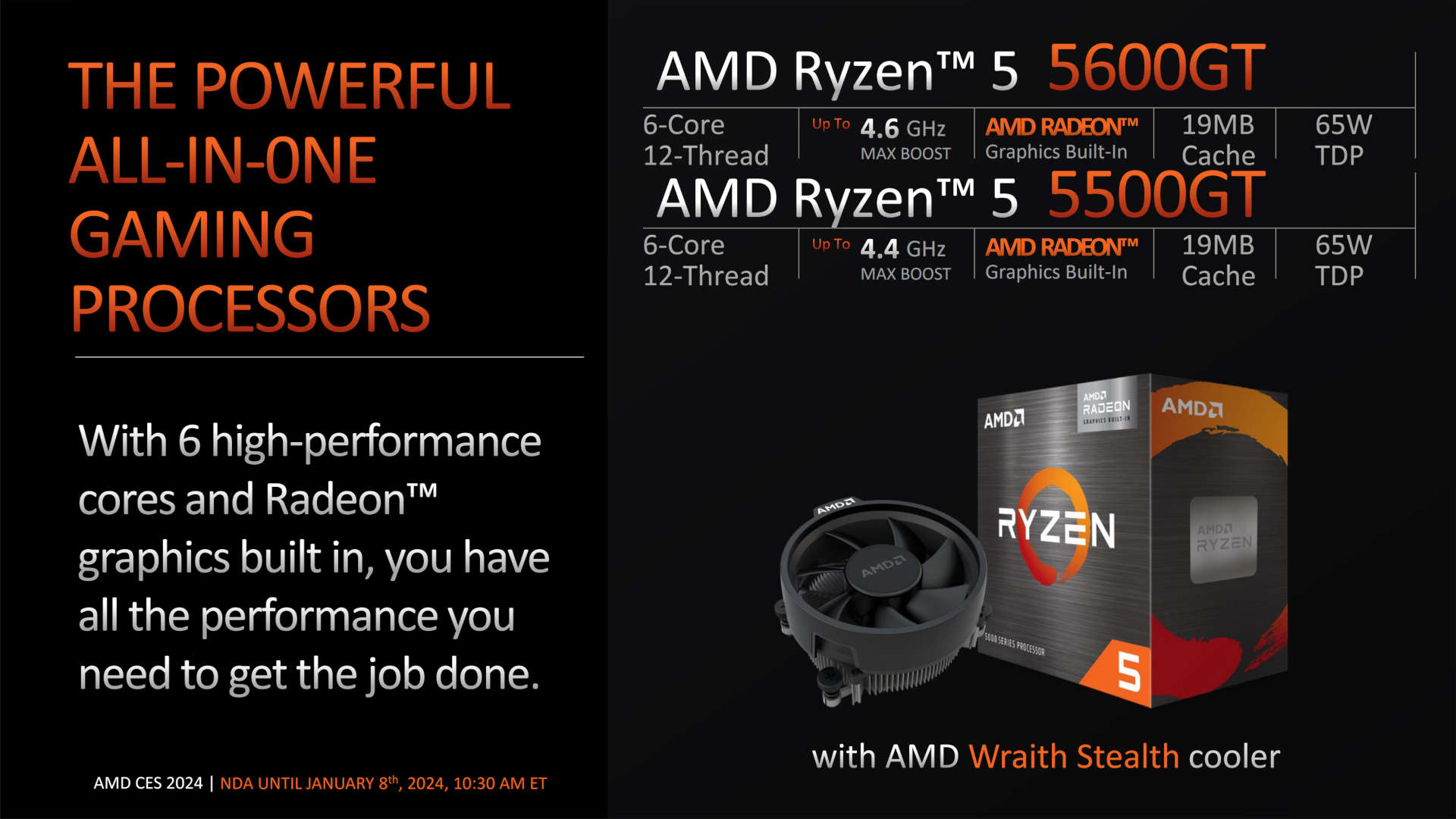
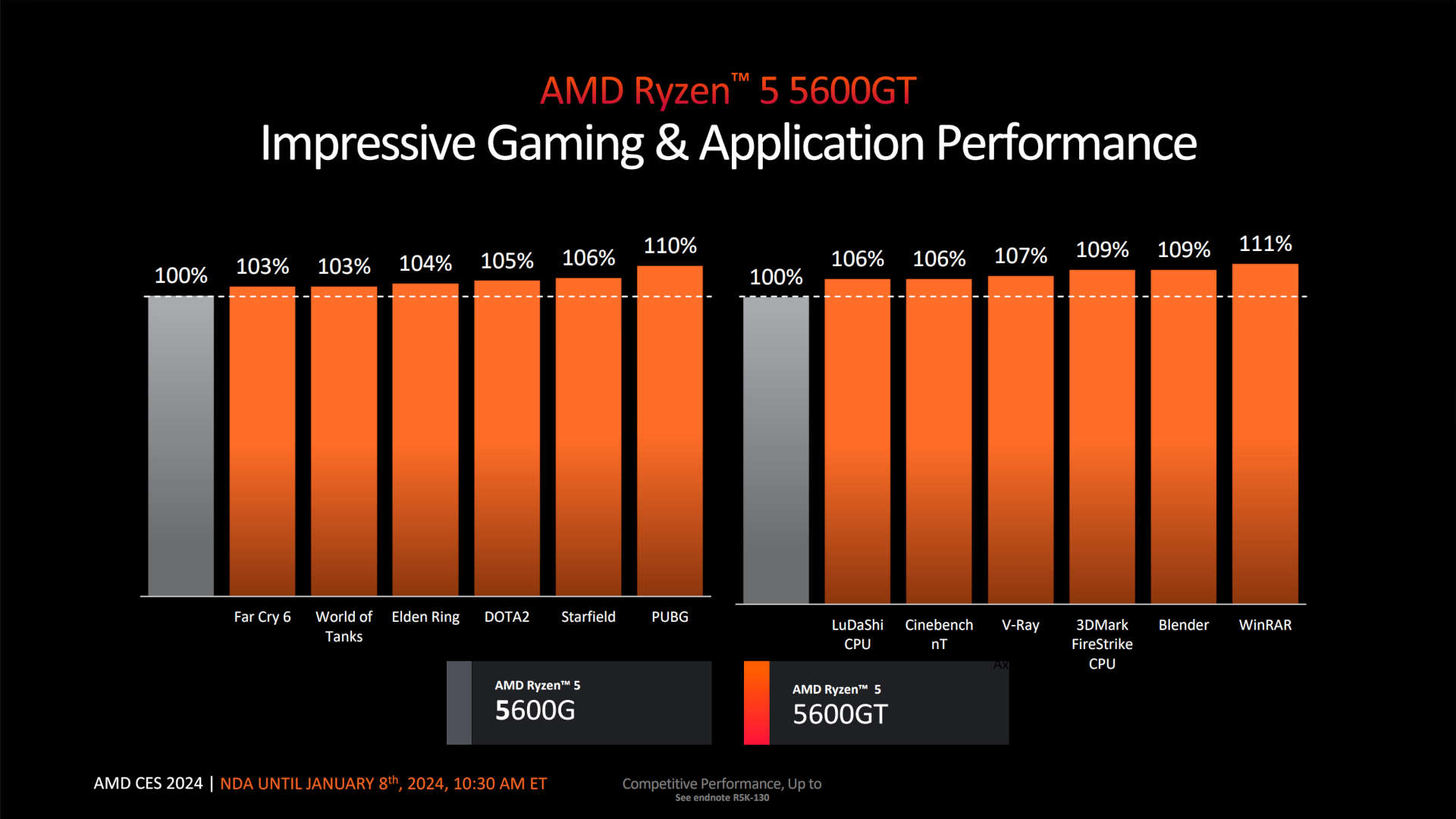
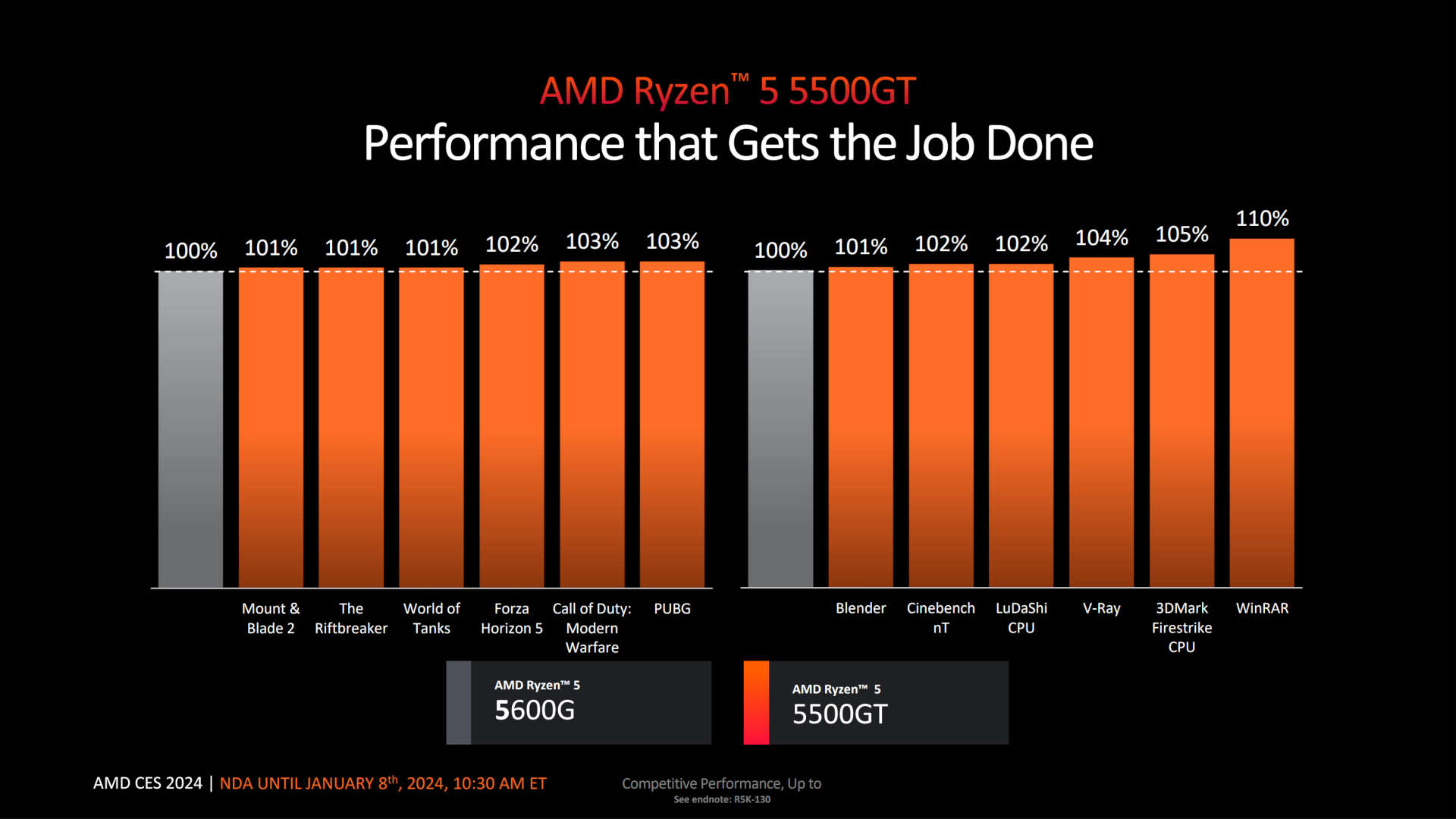
That might not sound very much but when you have so few to begin with, every single one of them will count towards having a decent gaming experience. To be honest, the only thing going for the new Ryzen 7 5700, 5600GT, and 5500GT processors are the prices.

Best CPU for gaming: The top chips from Intel and AMD.
Best gaming motherboard: The right boards.
Best graphics card: Your perfect pixel-pusher awaits.
Best SSD for gaming: Get into the game ahead of the rest.
They're honestly not bad CPUs and anyone currently using a first or second generation Ryzen would get a decent uplift in gaming performance with these.
But if you're after a cheap gaming-focused CPU for your AM4 PC then the Ryzen 7 5700X3D is the obvious choice, and if you're after an APU for the same platform, then the old Ryzen 7 5700G is still your best option.
It might sound like I'm being somewhat grumpy toward AMD for releasing all of the other chips but that's not the case: I'm genuinely happy to see products for the seven years old socket being released, even if they're based on slightly duff silicon.
AM4 really is the gift that just keeps on giving, and while these may well be the last presents underneath the 1331 pin Christmas tree, you can't help but admire AMD for what its done for this evergreen socket.
_____________________________________
PC Gamer's CES 2024 coverage is being published in association with Asus Republic of Gamers.

Nick, gaming, and computers all first met in 1981, with the love affair starting on a Sinclair ZX81 in kit form and a book on ZX Basic. He ended up becoming a physics and IT teacher, but by the late 1990s decided it was time to cut his teeth writing for a long defunct UK tech site. He went on to do the same at Madonion, helping to write the help files for 3DMark and PCMark. After a short stint working at Beyond3D.com, Nick joined Futuremark (MadOnion rebranded) full-time, as editor-in-chief for its gaming and hardware section, YouGamers. After the site shutdown, he became an engineering and computing lecturer for many years, but missed the writing bug. Cue four years at TechSpot.com and over 100 long articles on anything and everything. He freely admits to being far too obsessed with GPUs and open world grindy RPGs, but who isn't these days?

